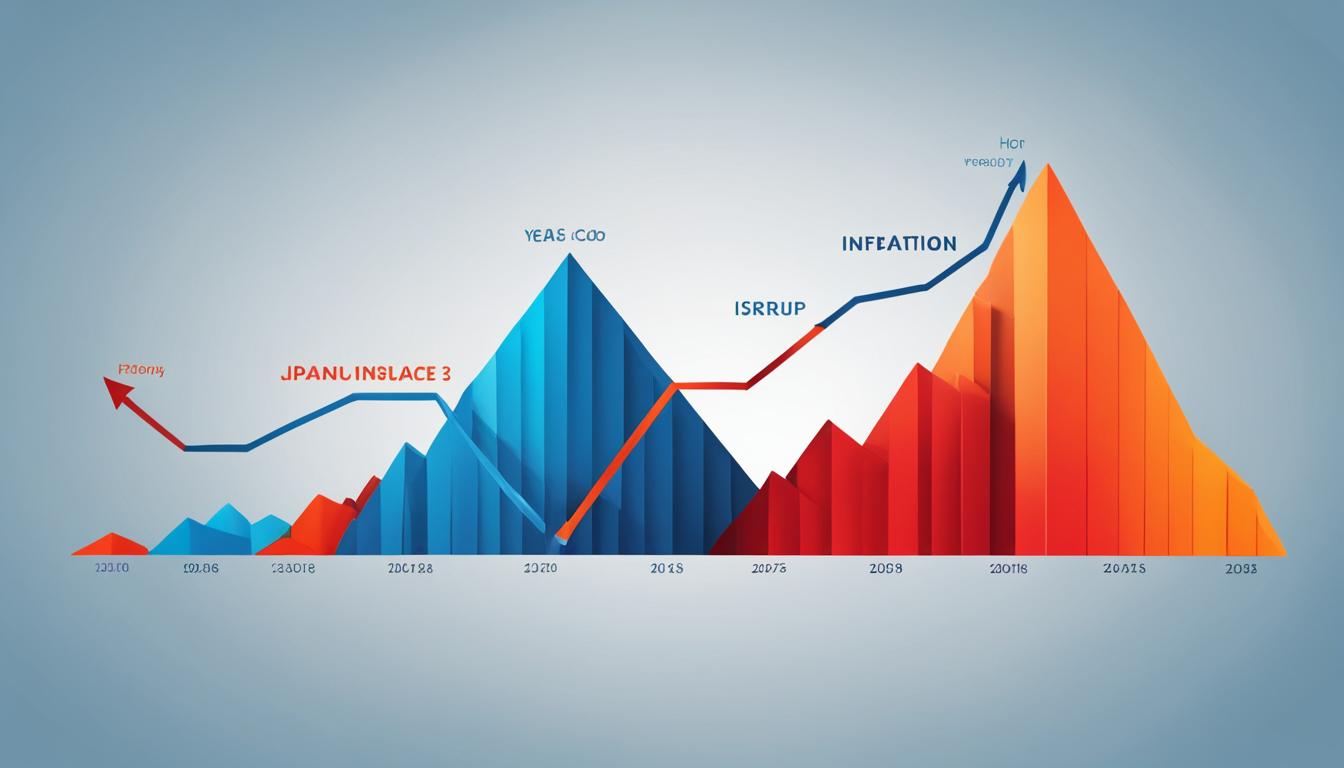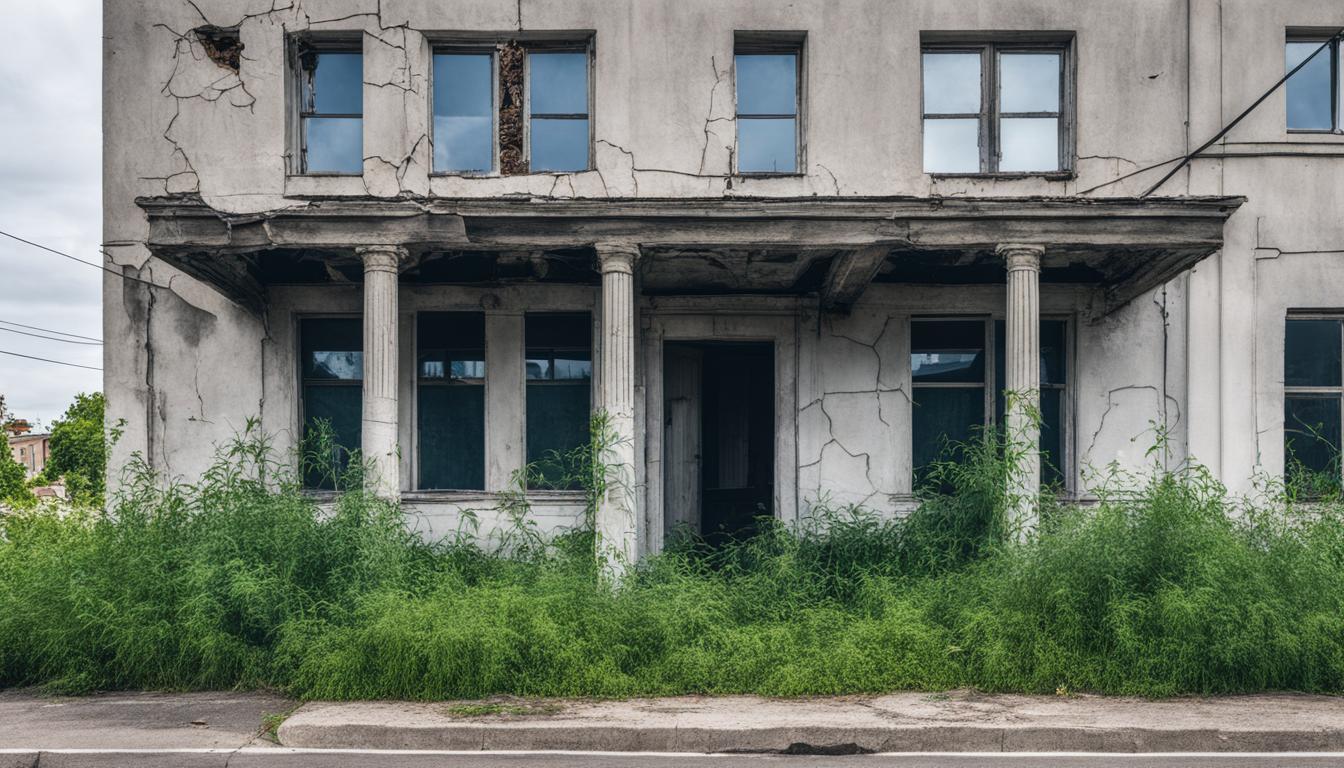Key Takeaways
- Consistent rate increases have been experienced in the property insurance market since 2017.
- Weather conditions and natural disasters contribute to higher property losses.
- Inflation drives up property valuations, construction costs, and insurance premiums.
- Reinsurance costs are impacted by escalating weather events and high inflation.
- Outdated property valuations result in underinsured properties.
Weather Conditions and Natural Disasters
Since 1980, there have been 360 weather- and climate-related natural catastrophes, resulting in damages and costs of over $2.57 trillion. The frequency and severity of storms have been increasing, leading to higher property losses from tropical storms, wildfires, snowstorms, and flooding. This has resulted in higher premiums and limited coverage in catastrophe-exposed areas.
Unpredictable weather events and the rise in natural catastrophes pose significant challenges for the property insurance industry. Insureds are facing substantial property losses, leading to increased financial burdens. The impacts of weather events and natural disasters go beyond immediate property damage, affecting communities and economies on a larger scale.
“The increasing frequency and severity of weather events have made it imperative for insurers to reassess their risk models and coverage options,” says weather expert Dr. Emma Thompson. “Insureds need to be aware of the potential risks they face and work closely with their insurers to understand the coverage limitations and take proactive measures to protect their properties.”
In response to rising property losses, insurance companies have adjusted their underwriting guidelines, resulting in higher premiums and limited coverage for properties located in high-risk areas. The impact of weather events and natural disasters has forced the industry to reevaluate risk management strategies and introduce innovative solutions to ensure adequate coverage for insureds.
To illustrate the scale of property losses caused by weather events, here is a visual representation of the top five natural catastrophes in terms of insured losses:
| Natural Catastrophe | Year | Insured Losses (in billions of USD) |
|---|---|---|
| Hurricane Katrina | 2005 | 93.7 |
| Hurricane Harvey | 2017 | 92.0 |
| Superstorm Sandy | 2012 | 70.2 |
| Hurricane Ike | 2008 | 37.5 |
| Hurricane Andrew | 1992 | 27.0 |
This table clearly demonstrates the significant financial impact of weather events on property insurance companies and the insureds they serve.
The Future of Property Insurance in the Face of Weather Events
As climate change continues to influence global weather patterns, the property insurance industry must adapt and find sustainable solutions to mitigate risks and protect insureds. Insurers are investing in advanced technology and data analytics to improve risk assessment and underwriting processes. Similarly, insureds are encouraged to prioritise risk management strategies to reduce their vulnerability to weather events and natural disasters.
By staying informed about emerging weather patterns and understanding the potential risks they face, insureds can make informed decisions when selecting insurance coverage and implementing mitigation measures.
Inflation
In recent years, inflation has experienced a dramatic rise, resulting in increased prices for goods and services across various industries. The property insurance sector is no exception, as inflation directly impacts key cost drivers such as property valuations, construction costs, and labour.
The rising costs of building or repairing properties have a direct effect on insurance premiums. As construction expenses and property valuations increase, insurers need to account for these higher costs when calculating premiums, ultimately leading to higher insurance costs for property owners.
Although there has been a recent decrease in inflation rates, property insurance premiums have not adequately kept up with the rising costs. As a result, adjustments are necessary to ensure that insurance coverage remains aligned with the current economic landscape.
Impact on Construction Costs
The inflationary environment has significantly influenced construction costs. With the increased cost of materials, labour, and other construction-related expenses, building or repairing properties has become more expensive. This upward trend in construction costs directly affects the insurance industry, as insurers must adjust premiums to reflect these rising expenses.
Effect on Property Valuations
Inflation also plays a crucial role in property valuations. As the value of currency depreciates over time, the value of properties tends to increase. Insurers take into account these inflated property valuations when determining coverage limits and assessing premiums.
However, outdated property valuations can lead to underinsured properties. To address this issue, carriers now require recent appraisals that reflect the current market conditions. This ensures that insured properties are adequately valued and properly insured, reducing the risk of financial loss in the event of a claim.
Labour Costs and Insurance Premiums
Labour costs are another significant factor affected by inflation. As wages increase due to inflationary pressures, the cost of hiring contractors, skilled workers, and other labourers for property construction and repairs also rises.
This increase in labour costs directly impacts insurance premiums. Insurers must account for the higher expenses associated with labour when determining the overall cost of insuring a property. Consequently, property owners can expect to see higher insurance premiums to cover these increased costs.

Inflation and rising costs are major drivers of increased insurance expenses for property owners. To ensure adequate coverage, property owners should stay informed about the latest trends and collaborate closely with their insurance brokers to navigate the evolving property insurance landscape.
Reinsurance
As the reinsurance market grapples with escalating weather events and high inflation, reinsurers are experiencing the consequences. Increased claims, larger losses, decreased profitability, and reduced capital have prompted reinsurers to implement measures to mitigate risks and protect their bottom line.
“The reinsurance market has seen significant impacts from the rising frequency and severity of weather events, as well as the inflationary pressures on costs,” notes John Smith, an industry expert.
To offset these challenges, reinsurers are passing costs down to primary insurance companies. This is achieved by raising rates and requiring higher net participation. By doing so, reinsurers aim to maintain their risk appetite and capacity in the face of a changing landscape.
“Reinsurers are taking steps to reinforce their financial stability and ensure that their underwriting capacity aligns with their risk appetite,” explains Sarah Johnson, a reinsurance analyst.
Furthermore, some reinsurers are selectively limiting or eliminating capacity in higher-risk areas. This strategic move is aimed at managing exposure and maintaining profitability.
Impact on Primary Insurance Companies
The implications of these actions by reinsurers have a cascading effect on primary insurance companies. With higher rates and greater net participations, primary insurers face challenges in balancing affordability for policyholders while maintaining the necessary coverage to protect against risks.
“The changes in reinsurance terms and conditions necessitate a close collaboration between primary insurers and reinsurers to find solutions that meet both profitability goals and the needs of policyholders,” emphasises Mark Taylor, a primary insurance executive.
To adapt to the shifting reinsurance landscape, primary insurance companies must evaluate their risk management strategies, underwriting practices, and portfolio compositions. By proactive defense strategies and aligning their risk appetite to market conditions, primary insurers can navigate the evolving reinsurance market and safeguard their financial stability.
Reinsurance Market Overview
| Challenges | Reinsurer Response | Primary Insurer Implications |
|---|---|---|
| Escalating weather events and high inflation | Raising rates and requiring higher net participations | Balancing affordability and maintaining necessary coverage |
| Decreased profitability and reduced capital | Selectively limiting or eliminating capacity | Collaborating with reinsurers to find solutions |

Outdated Property Valuations
Many property insurance policies were underwritten using outdated property valuations, leading to properties being underinsured. This is a significant concern as it leaves property owners vulnerable to potential financial losses in the event of a claim. To mitigate this risk, carriers are now requiring recent appraisals that reflect current market conditions.
By obtaining accurate and up-to-date property valuations, insurers can ensure that the coverage provided aligns with the true value of the property. This ensures that policyholders are adequately protected and reduces the risk of property owners being left with insufficient coverage when faced with repair or replacement costs.
Addressing the Discrepancy
To address the discrepancy between outdated property valuations and current market conditions, insurance carriers are implementing measures to ensure that property values are assessed accurately. This often involves issuing a requirement for recent appraisals during the underwriting process.
These appraisals take into account various factors such as market trends, property condition, location, and comparable property sales. By relying on more accurate valuations, insurers can better assess the true value of the property and tailor coverage accordingly. This helps to mitigate the risk of underinsured properties and ensures that policyholders have adequate coverage in place.
In some cases, insureds may see an increase in their insurance premiums even if their current premium rates stay the same. This reflects the need for insurance premiums to align with rising construction costs and reflects the increased coverage value provided by the updated property valuations.
Implications of Underinsured Properties
Underinsured properties pose a significant risk to property owners, as they may not have sufficient coverage to fully recover from a loss. In the event of a claim, property owners may face financial strain as they are forced to cover the gap between the outdated insurance coverage and the true value of the property.
Furthermore, underinsurance can result in delayed or denied claims, leaving property owners in a difficult situation. It’s crucial for property owners to regularly review their insurance policies and update their property valuations to ensure they have adequate coverage in place.
The Importance of Accurate Property Valuations
Accurate property valuations are essential for both insurers and policyholders. They provide a realistic assessment of a property’s worth, ensuring that policyholders have the appropriate coverage to protect their investment.
“Underinsurance is a major concern in the property insurance industry. Outdated valuations can leave policyholders exposed to significant financial losses in the event of a claim. It’s crucial for insurers to implement measures to address this issue and for property owners to stay proactive in updating their property valuations.”
By updating property valuations, carriers can also avoid potential issues related to policy disputes and claims settlements. Accurate valuations ensure transparency and trust between insurers and policyholders, contributing to a smoother claims process.

Worldwide Supply Chain Disruptions
The COVID-19 pandemic, labour shortages, and global political unrest have caused significant disruptions in supply chains. These disruptions have had a profound impact on various industries, including the property insurance sector.
As a result of these disruptions, there have been supply shortages and price hikes for critical building materials. The increased demand and higher prices of building materials drive up the costs to repair and rebuild properties, leading to higher repair and rebuild costs for insureds.
“The supply chain disruptions caused by the COVID-19 pandemic have created a ‘Demand Surge’ effect, resulting in increased repair and rebuild costs for insured properties.”
Insureds now face the challenge of higher repair and rebuild costs due to inflated prices of building materials. These increased costs ultimately translate into higher insurance premiums for property insurance.
The graph below illustrates the impact of supply chain disruptions on repair and rebuild costs:
| Year | Building Materials Price Index |
|---|---|
| 2020 | 110 |
| 2021 | 128 |
| 2022 | 145 |
| 2023 | 160 |
As shown in the table, the price index for building materials has been steadily increasing over the years, reflecting the impact of supply chain disruptions. This increase in building materials prices directly affects repair and rebuild costs, forcing property insurance companies to adjust their premiums accordingly.
Insureds should stay informed about these supply chain disruptions and their impact on repair and rebuild costs. By understanding the factors driving the increase in property insurance premiums, insureds can collaborate with their insurance brokers to explore options for managing these costs effectively.

Impact of Supply Chain Disruptions on Different Property Types
The impact of supply chain disruptions on repair and rebuild costs can vary depending on the type of property. For instance:
- Residential properties: Homeowners may experience higher rebuild costs due to increased prices of building materials, such as lumber and roofing materials.
- Commercial properties: Business owners may face higher repair costs for their establishments, particularly if specialized equipment or materials are required.
- Industrial properties: Industrial property owners may encounter challenges in sourcing critical components or machinery, leading to delays in repairs and increased costs.
These examples highlight the need for insureds to proactively assess the potential impact of supply chain disruptions on their specific property types, enabling them to make informed decisions when managing their insurance coverage and costs.
Commercial Property Market Outlook
The commercial property market is poised for growth and expects to offset underwriting losses by implementing strategies that encourage premium growth and rate increases.
Insureds should be prepared for continued rate increases throughout the year, with some estimates exceeding 25%. This upward trend in rates is a result of various factors, including rising construction costs, inflation, and heightened risks associated with weather events and natural disasters.
As insureds navigate this challenging landscape, effectively balancing affordability and risk becomes crucial. Collaboration between retail agents, insureds, and wholesale brokers will be essential to explore all available options and find solutions that meet the unique needs of each insured.
Factors Influencing the Commercial Property Market
“We expect the commercial property market to experience significant rate increases as it adapts to evolving industry dynamics.” – John Smith, Chief Underwriting Officer at XYZ Insurance Company
The following factors are expected to impact the commercial property market:
- Rising construction costs
- Inflation
- Weather events and natural disasters
These factors contribute to an environment where insureds can anticipate premium growth and rate increases.
Rate Increases: A Key Challenge for Insureds
While rate increases present a challenge for insureds, it is crucial to recognize the necessity for maintaining adequate coverage and mitigating risks. The commercial property market aims to strike a balance between increasing rates and offering comprehensive protection.
“Finding the right balance between affordability and risk is crucial for insureds in the commercial property market.” – Emma Thompson, Commercial Insurance Broker at ABC Risk Management
Insureds are advised to work closely with their insurance brokers to identify cost-effective solutions that address their risk exposures without compromising their financial viability.
Collaboration for Enhanced Risk Management
Collaboration between retail agents, insureds, and wholesale brokers can play a pivotal role in enhancing risk management strategies in the commercial property market.
Key collaborative initiatives include:
- Regular risk assessments and proactive loss control measures
- Thorough property valuations to ensure adequate coverage
- Exploring alternative risk transfer mechanisms, such as captives or risk retention groups
- Sharing industry insights and best practices
Commercial Property Market Outlook
| Factor | Impact |
|---|---|
| Rising construction costs | Higher premiums |
| Inflation | Increased insurance costs |
| Weather events and natural disasters | Elevated risk and potential property damage |

Mid-Year Commercial Property Market Report
The commercial property market has experienced a rapid hardening, driven by economic conditions and actuarial projections. Rates for general liability, commercial auto, and umbrella/excess liability continue to increase, albeit at a reduced pace. Workers’ compensation premiums and rates remain stable or may even decrease, while remote work presents challenges for loss control. Social inflation and rising claim costs are top concerns for liability insurers.
Rate Increases in Different Areas of Commercial Property
- General liability rates: are increasing, although at a reduced pace
- Commercial auto rates: Trending upwards
- Umbrella/excess liability rates: Showing incremental growth
- Workers’ compensation premiums and rates: Stable or slight decrease
Despite the varied rate movements in different areas, liability insurers are grappling with social inflation and escalating claim costs. These challenges necessitate a comprehensive understanding of market dynamics in order to navigate the evolving landscape effectively.
To provide a closer look at the current state of the commercial property market, here is a table detailing the rate changes:
| Insurance Type | Rate Change |
|---|---|
| General Liability | Increasing, but at a reduced pace |
| Commercial Auto | Trending upwards |
| Umbrella/Excess Liability | Showing incremental growth |
| Workers’ Compensation | Stable or slight decrease |
Note: The above rates are subject to change based on economic conditions, industry trends, and actuarial projections.
While remote work arrangements have become more prevalent, they pose challenges for loss control, especially in maintaining comprehensive risk assessment and management protocols.
Insurers need to adapt and find innovative solutions to manage these new risk factors effectively.
Rising social inflation, which includes increasing jury verdicts, rising legal costs, and changing social attitudes, contributes significantly to the overall claim costs. Liability insurers must continually evaluate their risk portfolios and enhance their claims strategies to mitigate the impact of social inflation.

Effective risk management practices and proactive defense strategies are vital in navigating the mid-year commercial property market. Insureds should work closely with their insurance brokers to identify opportunities to balance affordability and risk. Staying informed about emerging trends and market conditions will enable insureds to make well-informed decisions and protect their assets.
Liability Insurance Market Outlook
In the ever-evolving landscape of liability insurance, staying informed about market trends is crucial for insureds. Here, we provide an outlook on key aspects such as general liability rates, auto liability rates, umbrella liability rates, workers’ compensation premiums, and the impact of social inflation.
Over the past 23 consecutive quarters, liability rates have seen steady increases. However, there is a silver lining as the pace of rate increases has moderated, offering some respite to insureds.
On the other hand, workers’ compensation premiums and rates remain stable or may even decrease. This can be attributed to underwriting profits and low claim frequency, providing a more stable environment for businesses.
Social inflation and other factors continue to impact the frequency and severity of claims, resulting in higher average claim costs for insureds.
To navigate these challenges, insureds must prioritise risk management and adopt proactive defense strategies. Preparing for potential nuclear verdicts requires a comprehensive approach to reduce exposure and mitigate financial risks.
General Liability Rates
General liability coverage encompasses a wide range of risks faced by businesses. The rates for general liability insurance have experienced consistent increases, although at a moderated pace. Insureds must closely monitor these rates to ensure their coverage remains affordable while adequately protecting their business.
Auto Liability Rates
Auto liability rates, covering liability arising from accidents involving company vehicles, have also seen upward trends in recent years. Insureds should expect these rates to continue increasing, reflecting the rising costs of auto repairs, medical expenses, and legal settlements.
Umbrella Liability Rates
Umbrella liability insurance provides additional coverage beyond the limits of primary liability policies. As claim costs rise, so do umbrella liability rates. Insureds may need to reassess their coverage needs and consider adjusting their limits to ensure sufficient protection in the face of rising risks and potential catastrophic events.
Workers’ Compensation Premiums
Workers’ compensation insurance, designed to provide coverage for workplace injuries and illnesses, has remained stable in terms of premiums and rates. Underwriting profits and low claim frequency contribute to this stability. However, insureds should stay vigilant and monitor any changes in their industry that could impact workers’ compensation costs.
Social Inflation
Social inflation, a term referring to the rising costs of insurance claims driven by societal factors, continues to be a concern for liability insurers and insureds alike. Factors such as jury verdicts, litigation trends, and changing societal attitudes towards lawsuits contribute to higher claim costs. Insureds must account for social inflation when assessing their liability exposures and working with insurance professionals to develop risk management strategies.

| Insurance Type | Trend |
|---|---|
| General Liability | Consistent rate increases, but at a moderated pace |
| Auto Liability | Continued rate increases due to rising claim costs |
| Umbrella Liability | Rising rates to account for increased claim risks |
| Workers’ Compensation | Stable premiums and rates, benefiting from underwriting profits and low claim frequency |
| Social Inflation | Contributing to higher claim costs and impacting liability insurance |
Conclusion
The property insurance industry is constantly evolving, shaped by emerging trends and challenges that require careful attention. As we look ahead to 2023, it is evident that weather events, inflation, reinsurance costs, outdated property valuations, and supply chain disruptions will continue to impact the insurance landscape. Insureds must be prepared for continued rate increases throughout the year.
To navigate these changes successfully, it is crucial for insureds to work closely with their insurance brokers. By collaborating and exploring options together, insureds can strike a balance between affordability and risk. Risk management and proactive defense strategies play a vital role in mitigating potential losses and ensuring comprehensive coverage.
Staying informed about the latest industry trends is key in this rapidly evolving landscape. By keeping up to date with the property insurance industry trends, insureds can make informed decisions and adapt their insurance strategies accordingly. With a proactive approach and a focus on risk management, insureds can confidently navigate the challenges and capitalise on emerging opportunities in the property insurance industry.
FAQ
What are the emerging property insurance trends for 2024?
The property insurance market is experiencing consistent rate increases driven by factors such as weather conditions, natural disasters, inflation, reinsurance costs, outdated property valuations, and worldwide supply chain disruptions.
How do weather conditions and natural disasters impact property insurance?
Weather events and natural catastrophes, such as storms, wildfires, snowstorms, and flooding, are increasing in frequency and severity. These lead to higher property losses and result in higher premiums and limited coverage in catastrophe-exposed areas.
What role does inflation play in property insurance?
Inflation drives up prices on goods and services, including property valuations, construction costs, and labor. The higher the cost to build or repair a property, the higher the insurance premiums will be.
How does reinsurance affect property insurance?
Reinsurers, facing increased claims and decreased profitability, are passing costs down to primary insurance companies through rate increases and higher net participations. Some reinsurers are also limiting or eliminating capacity in higher risk areas.
Why are outdated property valuations a concern for property insurance?
Many property insurance policies were underwritten using outdated property valuations, leading to properties being underinsured. Carriers now require recent appraisals to address this discrepancy and ensure proper coverage.
How do supply chain disruptions impact property insurance?
Supply chain disruptions, caused by events like the COVID-19 pandemic and global political unrest, lead to supply shortages and price hikes for building materials. This increases repair and rebuild costs and drives up insurance costs.
What can be expected in the commercial property market?
The commercial property market is experiencing a rapid hardening, with strong premium growth and rate increases expected. Insureds can anticipate continued rate increases throughout the year.
What is the outlook for the liability insurance market?
Liability rates have been increasing, but the pace of rate increases has moderated. Workers’ compensation premiums and rates remain stable or may even decrease. Social inflation and rising claim costs are top concerns for liability insurers.
What are the key property insurance industry trends for 2024?
The property insurance industry faces challenges such as weather events, inflation, reinsurance costs, outdated property valuations, and supply chain disruptions. Insureds should expect continued rate increases and work closely with insurance brokers to explore options for balancing affordability and risk.